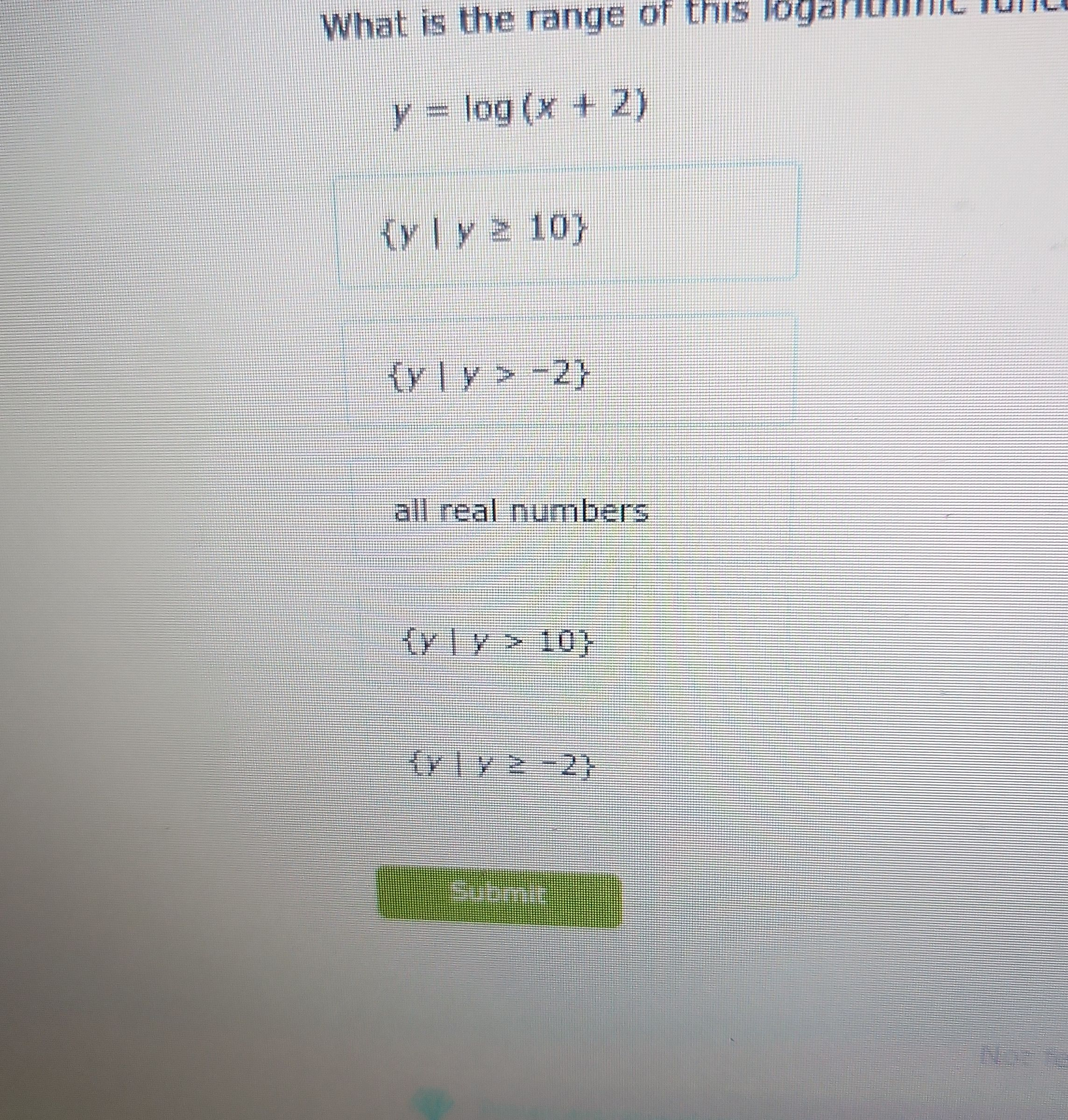Full solution
Q. What is the range of this logarithmic function?(A) (B) (C) all real numbers(D) (E)
- Understand function and question: Understand the function and what is being asked.The function given is , and we are asked to find its range. The range of a function is the set of all possible output values (-values) that the function can produce.
- Determine domain for function: Determine the domain of the function, as it will affect the range.The function is defined for all such that x+2 > 0, because the logarithm is only defined for positive arguments. Therefore, the domain of the function is x > -2.
- Find range using domain: Use the domain to find the range.Since the logarithm function is continuous and increases without bound as its argument goes to infinity, and since the smallest value in the domain is , the smallest value the function can take is , which is undefined. As increases beyond , will take on all values from negative infinity to positive infinity. Therefore, the range of the function is all real numbers.
- Check for restrictions or transformations: Check for any restrictions or transformations that could affect the range.There are no transformations or restrictions other than the domain limitation, which we have already considered. The logarithm function will continue to increase without bound as increases, and will approach negative infinity as approaches from the right. Therefore, the range remains all real numbers.
More problems from Domain and range of absolute value functions: equations
QuestionGet tutor help
QuestionGet tutor help
QuestionGet tutor help
QuestionGet tutor help
QuestionGet tutor help
QuestionGet tutor help
QuestionGet tutor help
QuestionGet tutor help
QuestionGet tutor help

